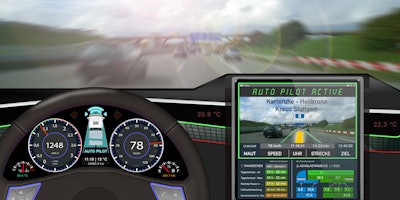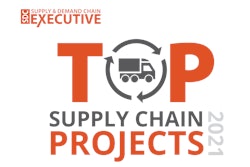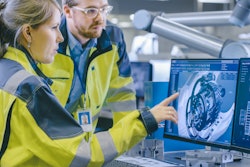
The many supply chain challenges today have no easy solutions. Technology can certainly help uncover every efficiency in the limited capacity, but not everyone is ready to leverage tools like artificial intelligence (AI) or machine learning (ML).
Many companies would stumble out of the gate with AI and ML right now because they haven’t paused to establish the problem they need to solve or identify what data they need to solve it with. At the same time, they’ve implemented technology like video cameras in trucks and warehouses but aren’t using that data to its full potential. They’ll never be able to fully leverage the data they collect without sharing it across supply chains to propel every customer and partner forward.
Here are three trends in supply chain technology that can help better reduce and manage risk.
1. Solving the data problem for AI and ML
A lot of times companies build technology for the sake of building technology. Companies turn to AI and ML to help them do a better job planning, managing inventory or increasing visibility. Few stop to ask what those new abilities will actually solve.
However, “if you automate without process, you’re just getting stupid faster.” Identifying the problem statement based on your industry, business model and so on is essential to the success of any AI or ML.
Stop and consider the business process behind these technologies and answer two questions, What are you solving for and what do you want the data to tell you?
Do you want to always fulfill a just-in-time delivery model? Do you want to reduce safety stock by 20% year-over-year while always meeting on-time delivery commitments? Whatever the question, gather the data components to get there.
Even if you’re not quite ready for AI and ML, asking these questions and figuring out what data you need to solve them can help put the right pieces in place.
2. Getting more visibility out of video
Transportation companies are already using video to monitor driver behavior, traffic conditions and more. External cameras on trucks can pick up on road congestion and how drivers handle traffic lights and other drivers on the road, while internal cameras monitor the driver’s head and shoulders or overall posture, and can alert the driver to pull over, take a nap or get some coffee if they’re exhibiting signs of fatigue.
From trucks to warehouses, many spaces are already monitored by cameras, but we’re not yet using them to their full potential. When you walk into a cashierless department store, cameras track you and every product you take off the shelf, adding it to the bill. In a warehouse, this same technology could tell how much air you’re shipping or how much cargo is sitting in the warehouse because you don’t have enough trailers or dock doors, so you can identify new areas of efficiency.
It could also identify and track losses and damages from theft or cargo falling off a truck. Some fleet already have cameras in warehouses and on trucks, and now we have the opportunity to take the images they collect so that supply chain professionals can better understand how they’re moving goods and where they’re wasting efficiency.
3. Getting real about supply chain orchestration
Supply chain orchestration is a term we’re going to hear more and more because of how siloed the different parts of the supply chain still are. Some companies are very protective of their data, fearing that customers will use that data against them if they share it.
This cautiousness can be overcome with true supplier partnerships and communication strategies aimed at making everyone successful. The real fear is a conversation about cheaper pricing or customers leaving for competitors. Instead, what are the joint KPIs that you could stand up to measure each other as true partners? The winners will be the ones driving cooperation of both information flow and product flow.
The future of supply chain risk management
Automation and broader applications of AI and ML are certainly ahead. But right now, take steps toward that future by identifying what it is you need to solve, what data you need to get there and how you can work with both existing technology and customers and partners to gain those insights. Only then can you have a full understanding of the risks you need to manage.



















